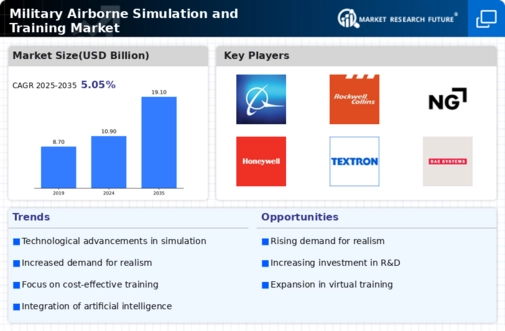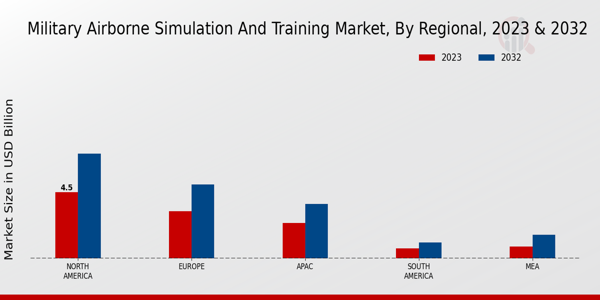Rising Defense Budgets
Rising defense budgets across various nations are significantly impacting the Military Airborne Simulation and Training Market. Governments are increasingly allocating funds to modernize their military capabilities, which includes investing in advanced training systems. For instance, defense budgets in regions such as North America and Europe have seen substantial increases, with some countries earmarking over 10% of their budgets for training and simulation technologies. This financial commitment is likely to drive innovation and expansion within the Military Airborne Simulation and Training Market, as military organizations seek to enhance operational readiness and effectiveness through state-of-the-art training solutions.
Focus on Joint and Coalition Training
The emphasis on joint and coalition training among allied forces is shaping the Military Airborne Simulation and Training Market. As military operations increasingly involve collaboration between different nations, there is a pressing need for training systems that facilitate interoperability. This trend is leading to the development of simulation platforms that can accommodate multiple users from various countries, allowing for coordinated training exercises. The market is witnessing a surge in demand for such collaborative training solutions, which are essential for ensuring that allied forces can operate seamlessly together in real-world scenarios. This focus on joint training is likely to drive growth in the Military Airborne Simulation and Training Market.
Integration of Artificial Intelligence
The integration of artificial intelligence (AI) into the Military Airborne Simulation and Training Market is transforming training methodologies. AI enhances realism in simulations, allowing for adaptive learning experiences tailored to individual trainee needs. This technology can analyze performance data in real-time, providing immediate feedback and facilitating targeted skill development. The market for AI in military training is projected to grow significantly, with estimates suggesting a compound annual growth rate of over 15% in the coming years. As militaries seek to optimize training efficiency and effectiveness, the adoption of AI-driven solutions is likely to become a cornerstone of the Military Airborne Simulation and Training Market.
Advancements in Simulation Technologies
Advancements in simulation technologies are a key driver of growth in the Military Airborne Simulation and Training Market. Innovations such as augmented reality, virtual reality, and high-fidelity graphics are enhancing the training experience for military personnel. These technologies allow for more engaging and effective training sessions, which are crucial for skill acquisition and retention. The market for simulation technologies is expected to expand rapidly, with projections indicating a growth rate of over 12% annually. As militaries continue to seek cutting-edge solutions to improve training outcomes, the integration of these advanced technologies will play a pivotal role in the evolution of the Military Airborne Simulation and Training Market.
Growing Demand for Realistic Training Environments
There is an increasing demand for realistic training environments within the Military Airborne Simulation and Training Market. As military operations become more complex, the need for immersive training solutions that accurately replicate real-world scenarios is paramount. This trend is reflected in the rising investments in high-fidelity simulators and virtual reality technologies. Reports indicate that the market for immersive training solutions is expected to reach several billion dollars by 2027, driven by the necessity for enhanced preparedness among military personnel. Consequently, the focus on creating lifelike training experiences is reshaping the landscape of the Military Airborne Simulation and Training Market.


















Leave a Comment